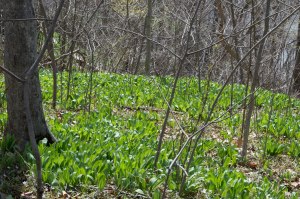More colorful pictures to take our minds away from winter browns and grays.
 Lespedeza repens (creeping lespedeza; Fabaceae)
Lespedeza repens (creeping lespedeza; Fabaceae)
Watch for this low-growing vine-like forb in open rocky areas of woodlands; it blooms in mid summer.
Allium cernuum (nodding onion; Amaryllidaceae)
I find this native onion blooming in early to mid summer. It grows on rocky outcrops near rivers.
Polygala polygama (racemed milkwort; Polygalaceae)
This beauty may have been my find of the year: it’s S1/threatened, and even though it ended up that this population was known to the Maryland DNR, it wasn’t known to me! All I can say is keep your eyes open, because the most wonderful things can be found in unexpected places.
 Geranium maculatum (wild geranium; Geraniaceae)
Geranium maculatum (wild geranium; Geraniaceae)
Look for this blooming in moist, rich woodlands in early to mid spring.
Geranium caroliniana (Carolina cranesbill; Geraniaceae)
The first time I saw this I thought it was a “weed”, since it was growing out of cracks in concrete curbing in a parking lot. Unexpected places. It’s charming when viewed up close. Or maybe I just love them all.
Geranium robertianum (herb-robert; Geraniaceae)
This species is S1 in Maryland, with only a few records of it in scattered locations. I’ve never seen it here; this one was in upstate New York.
Oxalis violacea (violet wood-sorrel; Oxalidaceae)
All the Maryland Oxalis species are yellow flowering, except for this one. Although not rare, I don’t see it very often; I believe it may have specific cultural requirements. Look for it in dry woodlands, blooming in early to mid spring.












